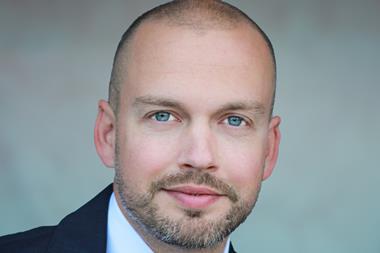Most American university endowments have been seriously hurt by the last two-year’s stock market decline. On average they have lost 3.6% on their investments in the year ending June 2001, according to the National Association of College and University Business Officers; and 2002 is not going better.
But the Harvard University’s endowment – which is the largest with $17.5bn (E17.3bn) assets under management – is quite an exception. In the fiscal year ending June 30, 2002 it lost only 0.5% and in the previous fiscal year it lost 2.7%. The two-year losses of 3.2% did not affect the endowment’s contribution to the university’s expenses: the 2001/2002 payout for Harvard’s programmes was $750m, about one third of the $2.3bn annual budget, as usual.
So the Harvard Management Company (HMC) – a wholly-owned subsidiary of Harvard University that was founded in 1974 to manage the university’s endowment, pension assets, working capital and deferred giving accounts – is quite proud of its achievements. The only clouds on its performances are political, raised by HarvardWatch, a student and alumni group, and the nonpartisan Center for Public Integrity. The two entities recently accused HMC of rescuing Bush’s Harken Energy Corporation by creating a partnership ‘much like the controversial investments that Enron Corp set up before it filed for bankruptcy-court protection’, as the Wall Street Journal summarised in a long article.
All facts date back to 1986-1990, before the current HMC president and chief executive officer Jack Meyer took office in September 1990. Actually it looks like the Harken affair was such a mess and with such bad consequences on the endowment that it was one of the major reasons why Meyer reorganised HMC.
Among the very first steps Meyer took in late 1990, was the appointment of a third party to value accurately private equity portfolio and a subsequent $200m write-down, the worst in the university’s history, mostly related to the Harken’s losses. Then in the spring of 1991, HMC established the Policy Portfolio, defined as ‘the long-term asset mix that is most likely to meet the university’s return goals with the appropriate level of risk’ and also as ‘the benchmark’ against which the performance of the actual portfolio is measured.
Prior to the Policy Portfolio, the investment decisions were largely left to ‘intuitions’ by HMC managers. One of them was Robert Stone Jr, a Texan oil businessman who happens to be also a contributor to Bush-family political campaigns (he retired from the corporation last spring and remains a director of HMC). In 1986 he convinced the HMC board that “oil prices had hit rock bottom and were poised to rise”, according to what Meyer said in a rare interview with the Boston Globe. So HMC decided to invest 5% of its $5bn assets in private oil and gas companies. One of them was Harken, which was a small, depressed energy stock that one month earlier had acquired Spectrum 7 Energy Corp, where the current US president George W Bush was chairman. That is why Bush was one of Harken board members: but his presence was not a factor for HMC officials who – according to the Boston Globe – “dismissed Bush as an out-of-touch board member whose value was overrated”.
Believe it or not, the real problem was that HMC’s bet on oil prices was wrong and Harken’s financial situation got worse and worse. The only reason the company didn’t collapse was due to HMC’s support right up to July 1990, when HMC and Harken decided to create a joint entity known as Harken Anadarco Partnership. The deal took $20m in debts and liabilities off Harken’s books. Critics, including the Wall Street Journal, say the deal helped to hide the truth behind Harken’s financial health and resembled Enron’s infamous partnerships. Meyer replied to the Boston Globe that the deal was part of an effort to separate the drilling assets from the rest of Harken and to focus on the ‘core’oil business. In the end, Harken stocks recovered a little and HMC was able to sell its stake with a small profit. HMC does not give more details on the operation and points out that its “investments in Harken were not inappropriate and were disclosed openly and properly”.
Since 1991 under Meyer’s guidance HMC has achieved excellent returns. The Policy Portfolio was established with a precise goal: “To invest in a manner that will permit a portion of the endowment to be spent each year and still maintain the real value of the endowment into the indefinite future,” as it reads on the Harvard website. It is regularly reviewed: for instance – Meyer explains in his last letter on fiscal 2002 performance – “in July 1999 the allocation to domestic equities was reduced and a new asset class, inflation-indexed bonds, was established”. Those were savvy and opportune moves that helped the endowment to weather the financial storm of the last two years. The current components of the Policy Portfolio are: domestic equities 15%, foreign equities 10%, emerging markets 5%, private equities 13%; absolute return 12%, high yield 5%, commodities 13%, real estate 10%; domestic bonds 11%, foreign bonds 5%, inflation-indexed bonds 6%, cash –5%. HMC does not disclose the real investments.
Another peculiarity of the Harvard’s endowment is that 60% of its portfolio is invested directly by HMC managers: that helps to better control risk exposure and has also proven to be cost-effective. The remaining assets are allocated to a group of external managers.
In fiscal 2002 the Harvard’s total performance (net of all expenses) outperformed both its benchmark by 4% and the typical institutional fund (as measured by the TUCS median, a universe of 100 institutional funds with assets over $1bn) by 5.4 percentage points.
The long-term real return target of the Harvard’s endowment is 6%. The 10-year actual annualised return was 15.2% compared to 11.4% of the benchmark and 9.9% of the TUCS median fund (all data at the end of June).












No comments yet